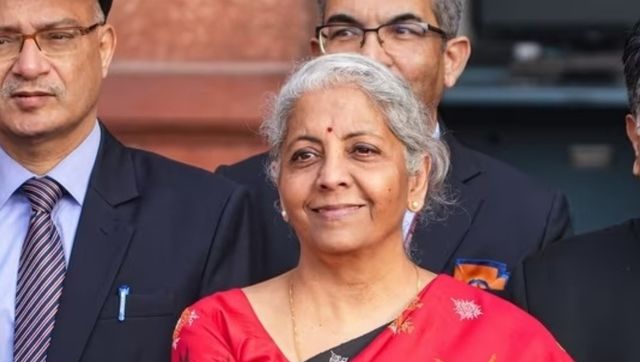Green growth is one of the 7 focus areas (‘Saptarishi’) of this Budget. A slew of initiatives announced by the government earlier are covered under this umbrella term, ranging from the vehicle scrapping policy to protection of wetlands. The government is wanting to take a lead globally in green hydrogen production and scaling up renewable energy production. Excise duty wave on compressed biogas The finance minister’s announcement of excise duty waiver on compressed biogas and customs duty exemption for Li-ion cell manufacturing shows the focus on green mobility as well. Ideally, we would like the government to streamline all these ‘green growth’ initiatives so that their alignment with and contribution to India’s Nationally Determined Contribution (NDC) to the UNFCCC becomes transparent. Targets and timelines for achieving net zero emissions in each major sector of the economy need to be defined, so that our progress can be meaningfully monitored and benchmarked globally. Global outlook The Indian economy is expected to post growth of over 7 percent amidst the global economic slowdown and the Russia-Ukraine war. The Budget is rightly focussed on increasing investments across various sectors to sustain this growth. What remains to be seen is whether the investment enthusiasm is reciprocated in equal measure by the private sector. G20 focus The Budget is supporting India’s economic growth along several dimensions. These include ensuring accelerated, resilient, and inclusive growth, timely achievement of SDGs, climate change mitigation and adaptation, technological transformation, building digital infrastructure, youth and women-led development, etc. These are also India’s priority themes for the G20 and this presents an opportunity to leverage our progress for influencing the global development agenda. Major successes achieved under missions such as the National Solar Mission, Swachh Bharat Mission, AMRUT, PMAY, etc. can be used to define the template for development in the Global South using the G20 forum. The G20 forum should also be used to build global consensus and initiate action on mobilizing climate and development finance into India for supporting our development targets. Boost for green energy The highlight of this Budget for the green energy sector is undoubtedly the National Green Hydrogen Mission and budget commitment of 19,700 Crores towards this. Achieving the 5 MMT production target by 2030 requires development of a massive national ecosystem to create this new sector, especially creating capacity to design, develop and manufacture cost-effective electrolysers, fuel cells, and mobility solutions based on GH2. The government will need to offer proper incentives to the private sector to ensure that they bring in the required technologies and also create the enabling policy environment that is needed to bring all stakeholders on board. Interestingly, the current annual grey hydrogen consumption in India is around 5 MMT. The demand is mainly in the petroleum refining, ammonia/methanol production, and metals processing industries. Hence, this mission is only aiming at supplying the current demand for grey hydrogen with green hydrogen within the next eight years. While this is commendable, it is quite conservative since this is not a factor in the huge potential of GH2 to accelerate the energy transition in other carbon-intensive sectors such as transportation. The national ambition of becoming energy independent by 2047 and achieving a Net Zero economy by 2070 is also essentially a conservative one. This can be achieved much earlier with faster adoption of renewables plus GH2. We would like the govt. to review this mission annually and revise the mission targets and budgets upwards as technologies and cost economics of green hydrogen mature. Municipal bonds and credit ratings The Budget has an enormous push towards making the cities self-reliant and sustainable by improving their creditworthiness. In the current scenario, ULBs can enhance their revenues through property tax and user charges, which are also mandatory reforms under the 15th Finance commission and various urban infrastructure schemes. A progressive ecosystem and policy environment for these reforms at the State level will enable the cities to act on the ground, especially in tier-2 and tier-3 cities, which are the next hub for urbanisation. A synergistic partnership of various tools like blended financing, urban infrastructure funds, and Municipal bonds coupled with the handholding for the cities through National and state level knowledge dissemination and capacity building will help the cities improve their creditworthiness for issuing Municipal bonds. Green credit program Emphasis on Green Credit Programs is the need of the hour, with climate change we are witnessing huge impacts in the cities. The budget focuses on green credit programs incentivising the urban local bodies. It is time to re-look at how the local bodies are designing their programs and projects to be also cognizant of Environment, Social, and Governance frameworks. State governments, especially the government bodies mandated for capital investments and implementation, play a major role in redefining how the projects are implemented with minimum impacts on the environment and natural resources. Infrastructure development institutions / SPVs will play a vital role in taking this forward. The writer is Senior Director, Urban Infrastructure, IPE Global- an international development consulting firm. Views expressed are personal. Read all the Latest News , Trending News , Cricket News , Bollywood News , India News and Entertainment News here. Follow us on Facebook , Twitter and Instagram .
Budget 2023: Government wants to take lead globally in green hydrogen production, scale up RE production
Anil Bansal
• February 7, 2023, 10:17:51 IST
Targets and timelines for achieving net zero emissions in each major sector must be defined
Advertisement
)
End of Article